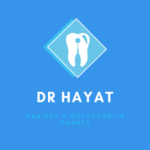Less effective and inexpensive treatments are obtained by manufacturing aligners® in prosthetic laboratories. In this case, the plaster model and manual cutting of the teeth on the plaster are still used. This technique has been used since the 1950s to make small dental movements and often requires many adjustment visits due to the lack of accurate calculation of movements by scanning and computer. The approximation is such that it is often necessary to make several impressions to align the teeth. In the case of more complex dental displacements, only the aligners® obtained by stereo lithography in the liquid resin from modelled impressions can give a result.
It is this confusion between the different devices that makes patients hear themselves say « in my case it is not possible » or « Invisalign® will not work for you ».
To be able to practice the Invisalign® technique, an orthodontist must have followed a one or two-day training course given by an orthodontist trainer approved by Invisalign®.
Most orthodontists are certified or accredited Invisalign®. However, very few of them devote their activity to Invisalign® because the habits acquired by the university education and the firm’s experience are so different from this technique. Many who have stopped or never practiced after their certification and authorization of Invisalign®. However, they keep their authorization to practice this technique for life.
In Europe, very few people have chosen to treat everything with this technique and follow training courses abroad and outside universities to improve their skills and provide Invisalign® treatments to a greater number of patients.
Invisalign® cannot treat all cases, but an experienced orthodontist can treat all cases with Invisalign® and auxiliaries.

